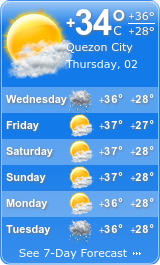Investigation of Delta variant community transmission at the national level ongoing

(Eagle News) – The Department of Health has confirmed the “community transmission” of the highly infectious and aggressive COVID-19 Delta variant in Metro Manila and in CALABARZON or the Southern Tagalog region
Dr. Alethea De Guzman, DOH Epidemiology Bureau Director, said that in Metro Manila or the National Capital Region and in Region 4-A or Calabarzon, ongoing community transmission is confirmed, while the DOH is still studying if there is enough evidence to say that there is community transmission on a national scale.
De Guzman said that so far, the Delta variant infections in the country have reached at least 1,273. They stick lack evidence to say that there is community transmission at the national level, she said.
But she said that at the sub-national or regional level, the NCR and Calabarzon were determined to have “ongoing community transmission.”
-Other regions with high Delta cases-
In a Laging Handa press briefing, she said that there were also many Delta variant cases found in Region 3 (Central Luzon) Region 6 (Western Visayas), and Region 7 (Central Visayas).
De Guzman said that they are still waiting for the results of the case investigation of the local epidemiology and surveillance units and that they are also coordinating with the Philippine Genome Center for the required “phylogenetic analysis.”
The phylogenetic analysis involves examination of the cases, and their epidemiological links.
“Pero tulad po ng nabanggit ko, tayo ay tuluy-tuloy pa, ‘iniintay natin iyong pagbalik ng mga ginawang case investigation ng ating mga Local Epidemiology and Surveillance Units at tayo ay nakikipatulungan with UP-Philippine Genome Center para gumawa ng tumatawag na phylogenetic analysis. Ito po iyong pagli-link sa mga kaso, pero hindi dahil sa exposure, pero iyong genetic characteristic nila, sila ba ay magkakamag-anak o iyon nga epidemiologically linked po ba sila sa isa’t isa,” she explained.
In declaring a Delta variant community transmission in a certain area, these factors are assessed – huge number of Delta variant cases, and a determination if they are linked to each other.
“Kapag sinabi nating ‘nali-link,’ mayroon po bang iisang kaso na o nalalaman pa ba natin, kanino po sila nahawa o saan nila nakuha,” De Guzman explained.
–Most Delta cases in NCR, Calabarzon-
She said most of the 1,273 local Delta cases are in Metro Manila and Calabarzon.
In Metro Manila, there are 482 Delta cases, and 358 of these are found in clusters in barangays.
“Nakita natin while nationally umabot na tayo ng 1,273 na local Delta cases, karamihan talaga dito ay nakita natin sa National Capital Region at sa CALABARZON at ang datos na mayroon tayo ay of the 482 ‘no Delta cases sa NCR, while 358 ay galing sa mga cluster in barangay noong tayo po ay nag-imbestiga,” she said.
“Ang mga nakuha nating information ay hindi na po ma-determine ang ating mga kaso kung kanino po talaga sila nahawa or saan-saang setting sila nagpunta at posibleng doon po nila nakuha iyong infection,” she noted.
In Calabarzon, the DOH said that there were 182 local Delta cases, and upon investigation, these cases could not be linked to each other.
“Nakita din natin na ganoon din para sa ating CALABARZON where we have 182 local Delta cases. At noong tayo binabalikan natin kung mayroon po bang koneksiyon ang ating mga kaso to each other, nakita natin karamihan na talaga sa kanila ay hindi na nga po linked, hindi sila magkasama sa iisang lugar, hindi na natin ma-trace to certain cases iyong kanilang surface of infection. And these were the basis for us to declare community transmission for NCR and for CALABARZON,” De Guzman explained.
(Eagle News Service)








